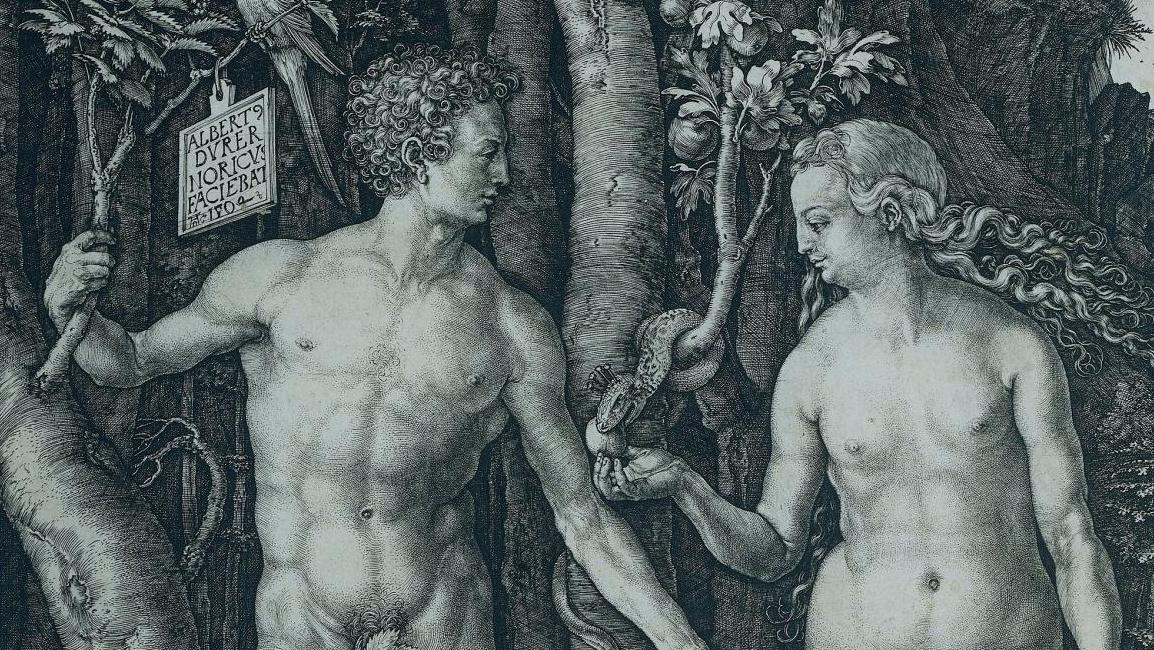Through a selection of prints, drawings, paintings and journal entries, the National Gallery’s exhibition in London, "Dürer’s Journeys - Travels of a Renaissance Artist", chronicles the artist’s travels across Europe, during which he accumulated knowledge, disseminated his work and established his fame.
Albrecht Dürer, Adam and Eve, 1504, engraving, 25.1 × 19.2 cm/9.8 x 7.5 in.
Image courtesy of the National Gallery London, Rijksmuseum, Amsterdam (RP-P-OB-1155) © Rijksmuseum, Amsterdam
Early Years and Travels to the Alps and Italy, 1490s Familiarizing himself with the tools and materials in the workshop of his goldsmith father in Nuremberg, and as an apprentice to local printer Michael Wolgemut, Dürer soon embarked on the customary Wanderjahre (“wandering years”) undertaken by aspiring craftsmen, journeying to Alsace, across the Brenner frontier, and into Italy. Of this journey, the first room of the exhibition displays several watercolors produced by Dürer, topographical studies of rock formations and landscapes that are virtually unprecedented in their subject and en plein air creation. In Italy, Dürer’s technical facility imbibed the theoretical knowledge of Italian art and classical antiquity. In the exhibition, we see Dürer returning to Nuremberg and experimenting in his journal with ideal human body proportions according to the principles of Roman architect Vitruvius, whose treaties gained prominence during Italy’s Quattrocento, as expressed in Leonardo da Vinci’s Vitruvian Man (1490). By 1504, with…
com.dsi.gazette.Article : 31745
This content is for subscribers only
You still have 85% left to read.
